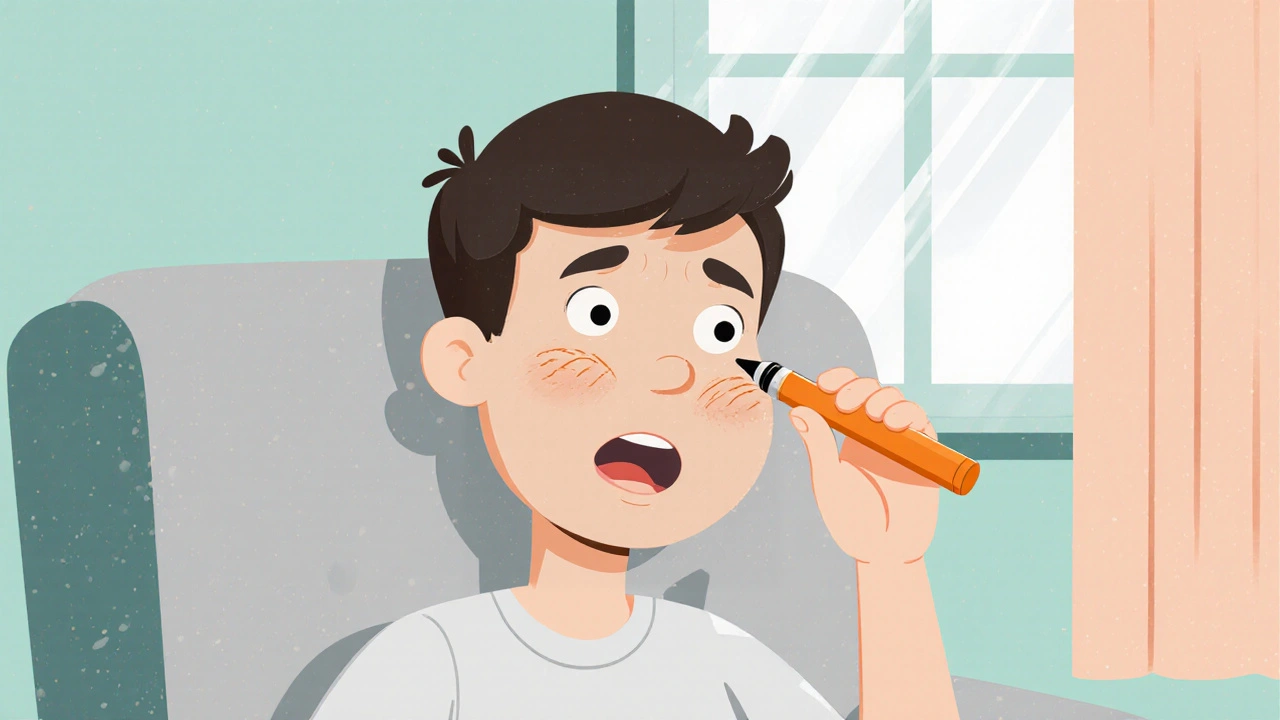When dealing with Prednisolone, a synthetic glucocorticoid used to reduce inflammation. Also known as Prednisone, it belongs to the Corticosteroids, a class of steroid hormones family. A common Side effects, unintended reactions that can appear with medication is Acne, a skin condition marked by pimples and inflammation. Understanding how these pieces fit together helps you tackle the problem before it worsens.
Prednisolone works by suppressing the immune system and altering hormone balance. Those changes can increase oil production in sebaceous glands, creating a perfect breeding ground for acne‑causing bacteria. At the same time, reduced inflammation can mask early breakout signs, letting lesions grow larger before you notice them. This double‑edged effect explains why many users report new or worsening acne shortly after starting therapy.
Dosage and treatment length matter a lot. High doses or prolonged courses raise the odds of steroid‑induced acne, while short bursts often spare the skin. Your personal skin type also plays a role—people with oily or acne‑prone skin tend to notice flare‑ups faster than those with dry or sensitive skin.
Spotting steroid‑related acne isn’t always straightforward. Traditional acne often appears on the forehead, nose, and chin, whereas prednisolone acne can pop up on the chest, back, and even the shoulders. The lesions may be more papular or cystic, and they sometimes develop a “burner‑like” texture. Knowing these patterns lets you differentiate drug‑triggered breakouts from regular hormonal acne.
Prevention starts with a solid skincare routine. Choose non‑comedogenic cleansers, moisturizers, and sunscreens that won’t clog pores. Gentle exfoliation a few times a week can keep dead skin cells from trapping oil. Some experts also recommend a low‑glycemic diet and limiting dairy, as these foods can feed acne‑promoting pathways.
If breakouts appear, treatment options are similar to those for regular acne but may need a stronger approach. Over‑the‑counter benzoyl peroxide or salicylic acid can reduce bacteria and clear pores. For moderate to severe cases, topical retinoids or a short course of oral antibiotics may be prescribed. In certain situations, adjusting the prednisolone dose or switching to an alternative medication can dramatically improve skin health.
Always involve a healthcare professional before changing anything. A dermatologist can recommend the right topical regimen while your prescribing doctor evaluates whether the steroid dose can be tapered safely. Balancing the anti‑inflammatory benefits of prednisolone with the desire for clear skin often requires a collaborative plan.
Keep an eye on your skin throughout treatment. If you notice sudden, painful nodules, spreading redness, or lesions that don’t respond to standard acne products, it’s time to seek medical advice. Early intervention prevents scarring and helps maintain confidence while you continue the necessary steroid therapy.
Below you’ll find a curated collection of articles that dive deeper into prednisolone’s uses, dosage tips, safety considerations, and direct comparisons with other medications. This resource is designed to give you practical insights and actionable steps for managing prednisolone acne and related concerns. prednisolone acne is just one piece of the puzzle, and the posts ahead cover everything from side‑effect monitoring to alternative treatments, so you can make informed choices about your health.
